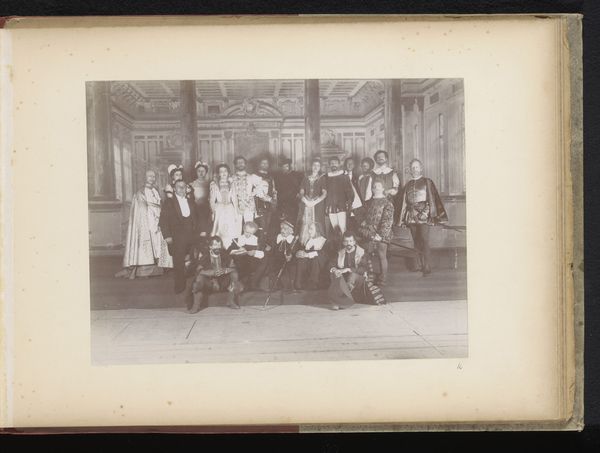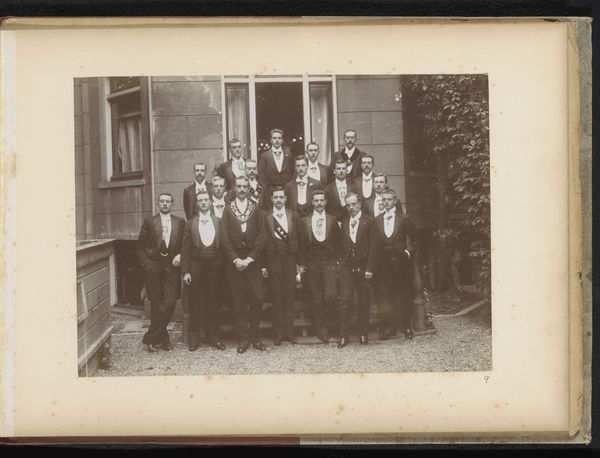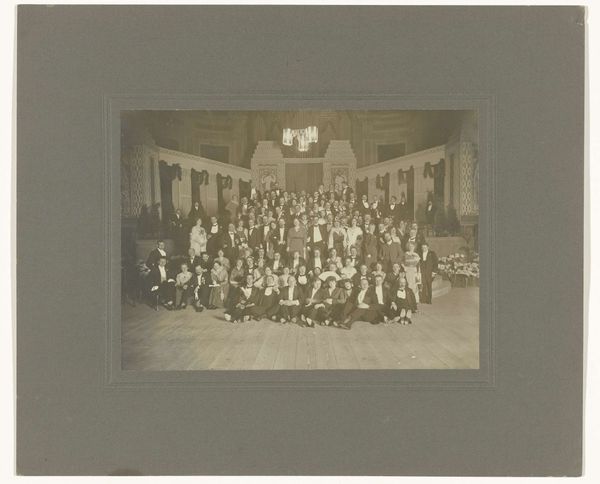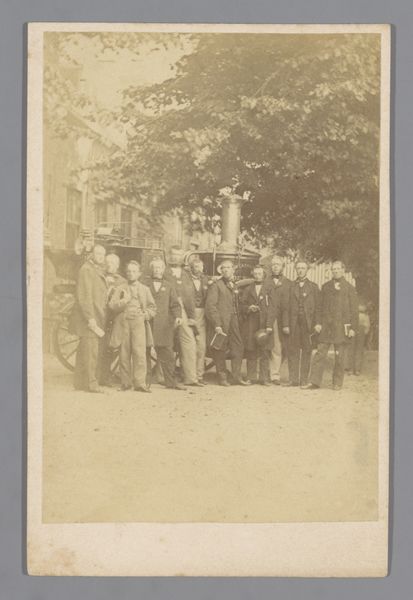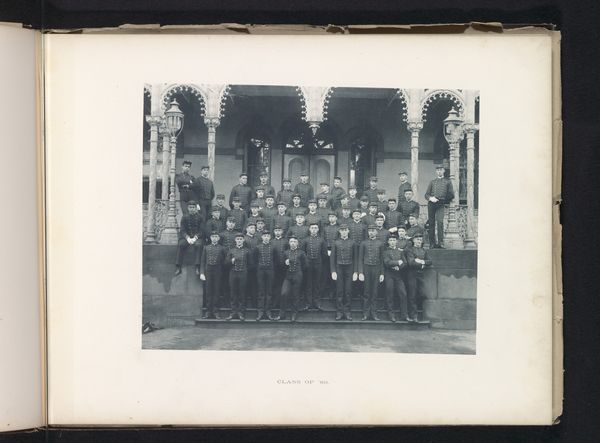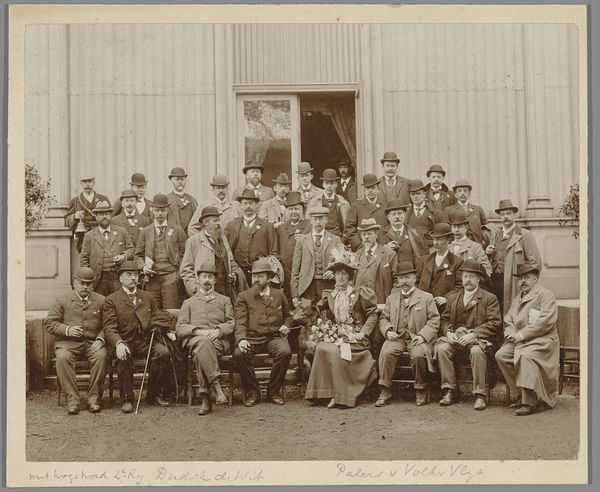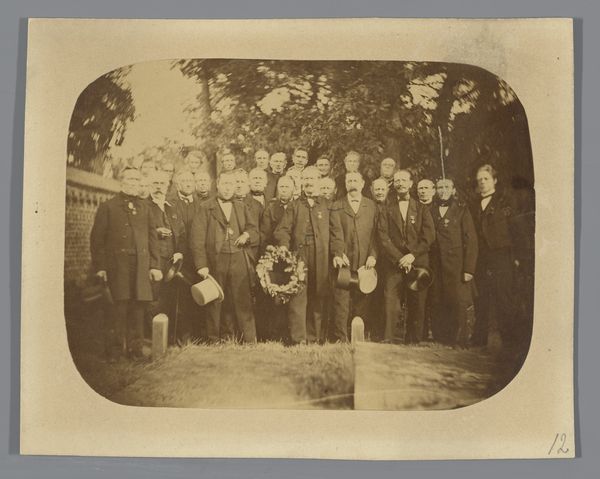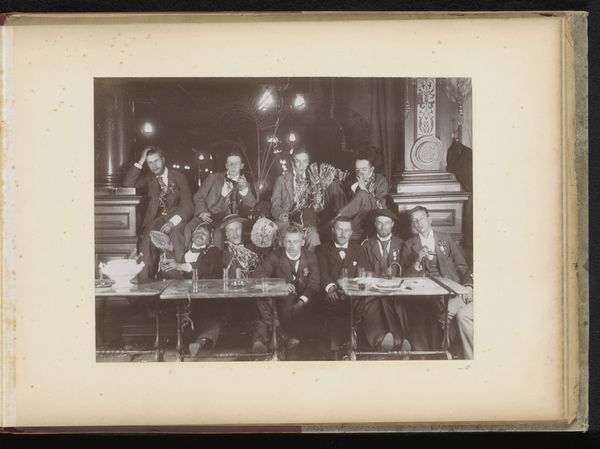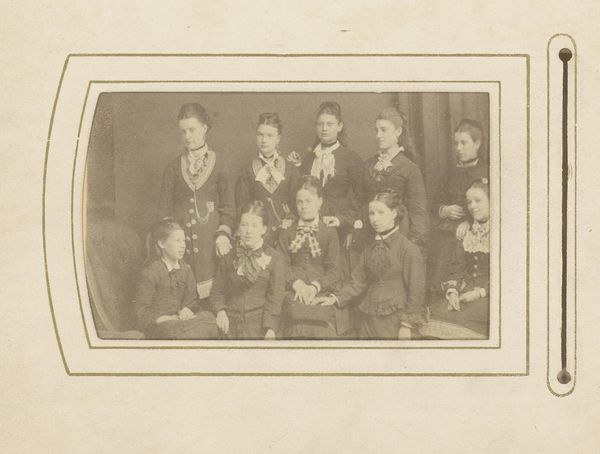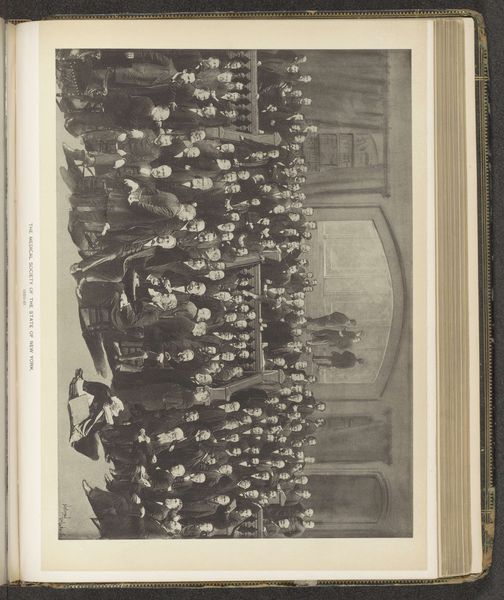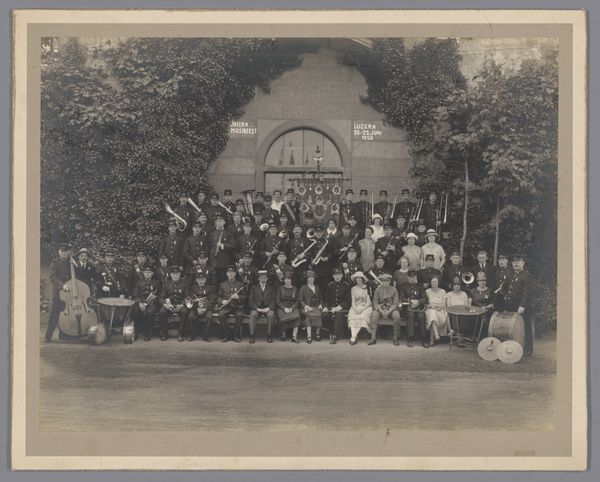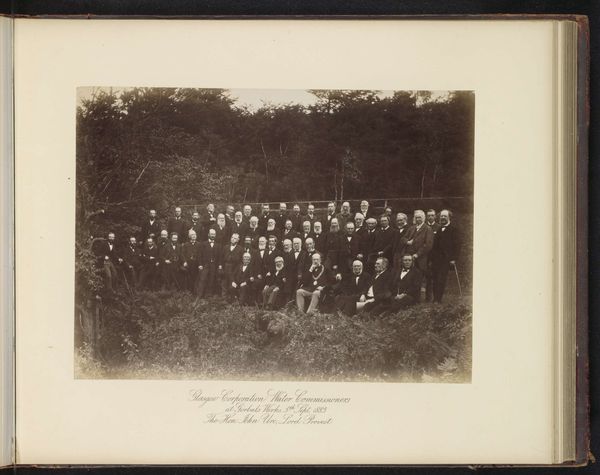
Groepsportret van leden van het Amsterdamsch Studenten Corps c. 1897
0:00
0:00
nicolaasschuitvlot
Rijksmuseum
photography, gelatin-silver-print
#
portrait
#
dutch-golden-age
#
photography
#
group-portraits
#
gelatin-silver-print
#
genre-painting
Dimensions: height 219 mm, width 165 mm
Copyright: Rijks Museum: Open Domain
Editor: So, we are looking at a photograph here, "Groepsportret van leden van het Amsterdamsch Studenten Corps," or Group Portrait of Members of the Amsterdam Student Corps, taken around 1897 by Nicolaas Schuitvlot. It's a gelatin silver print, and it really captures the spirit of camaraderie, but also this distinct late 19th-century Dutch vibe. I am struck by the almost theatrical way they're posed. What are your initial thoughts on this piece? Curator: Theatrical is an excellent observation. Group portraits like this one were carefully staged social performances, weren't they? How does this image position itself within a specific historical moment and power structure? Editor: Could you elaborate on what you mean by "power structure"? Curator: Consider who is being represented here: the Amsterdam Student Corps. What does it mean to be a member of this organization in the late 19th century? Who has access, and who is excluded? Photography was gaining prominence and accessibility then, so this image marks an interesting intersection of technology, social class, and institutional identity. Notice how they present themselves – their attire, their posture, even their facial expressions. Editor: That makes sense. I didn't think about it that way. The fact that this photo immortalizes this exclusive group definitely gives it an edge. You also notice this sense of pride and maybe a desire to assert their presence and social status? Curator: Precisely. It’s also worthwhile to ask where images like this end up – in albums, displayed in homes, or archived by the organization itself, reinforcing their internal sense of cohesion and their public image. So how do spaces like museums change their meanings and impact? Editor: So it’s more than just a photo; it’s about visibility, preservation, and perpetuation of an institution’s values. Curator: Exactly! This portrait, in its original time and today in a museum, raises questions about who gets remembered, and what stories are told about them. It speaks volumes about power, representation, and the enduring influence of institutional culture. Editor: It makes you think about the layers of meaning that are hidden in plain sight.
Comments
No comments
Be the first to comment and join the conversation on the ultimate creative platform.
